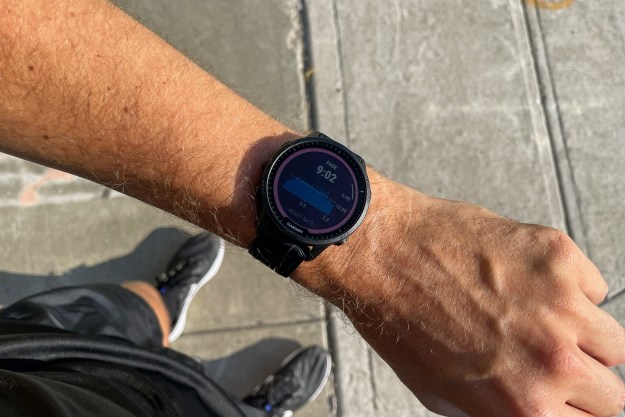Ever see a kid walking across stepping stones in a park? Even if the stepping stones are an uneven distance apart and at slightly varying heights, this is a skill that most children have picked up at just a few years old. By the time we’re adults, the ability to swiftly walk or even run over this kind of terrain is something the majority of people can do without a second thought. But it’s not an easy task for robots — since it requires very precise foot placement in which even small errors can lead to potential falls.
A team of researchers at the University of California, Berkeley, and Carnegie Mellon University, including Professor Koushil Sreenath, Ayush Agrawal, and Quan Nguyen, may have cracked it, however. They have developed control algorithms which allows a human-scale bipedal ATRIAS robot, originally designed and built by the Oregon State University Dynamic Robotics Laboratory, to dynamically and swiftly walk over a random terrain composed of stepping stones.
“In this work, we demonstrate the capabilities of our control algorithms to be able to achieve precise footstep placement over stepping stones, with varying step lengths and step heights, on a human scale bipedal robot,” Agrawal told Digital Trends. “Walking over discrete terrain, such as stairways or wooded paths, safely and robustly is critical for legged robots as this allows for them to be deployed in applications — for example in search and rescue, in space exploration, or as personal robots at homes.”

To create their control algorithms, the researchers first built a library of periodic gaits for walking at different step lengths and heights, through a process referred to as trajectory optimization. They then created feedback control policies to allow the robot to dynamically use this knowledge even when it only has access to information about the stepping stone immediately in front of it. The robot is able to negotiate step lengths between 30 cm and 65 cm, and height variations of 20 cm.
“Enabling a robot to place its foot on a stepping stone at the end of the step is very much similar to enabling an autonomous car to stay within a lane,” Sreenath told us. “Both these are examples of safety-critical constraints. Even small violations in these constraints could result in catastrophic consequences. We use results from feedback control theory to guarantee these safety constraints.”
At present, the robots do not have onboard sensors such as cameras or LIDAR, and have to be told the information about the step right in front of them. In the future, however, the researchers hope to combine this work with computer vision research to develop a completely autonomous system.
Editors' Recommendations
- Watch Boston Dynamics’ dog-like robot don a dog suit and dance
- Watch this disembodied set of robotic ostrich legs juggle a ball on its ‘head’
- This crazy-looking robot uses microspines on its legs to climb up walls


